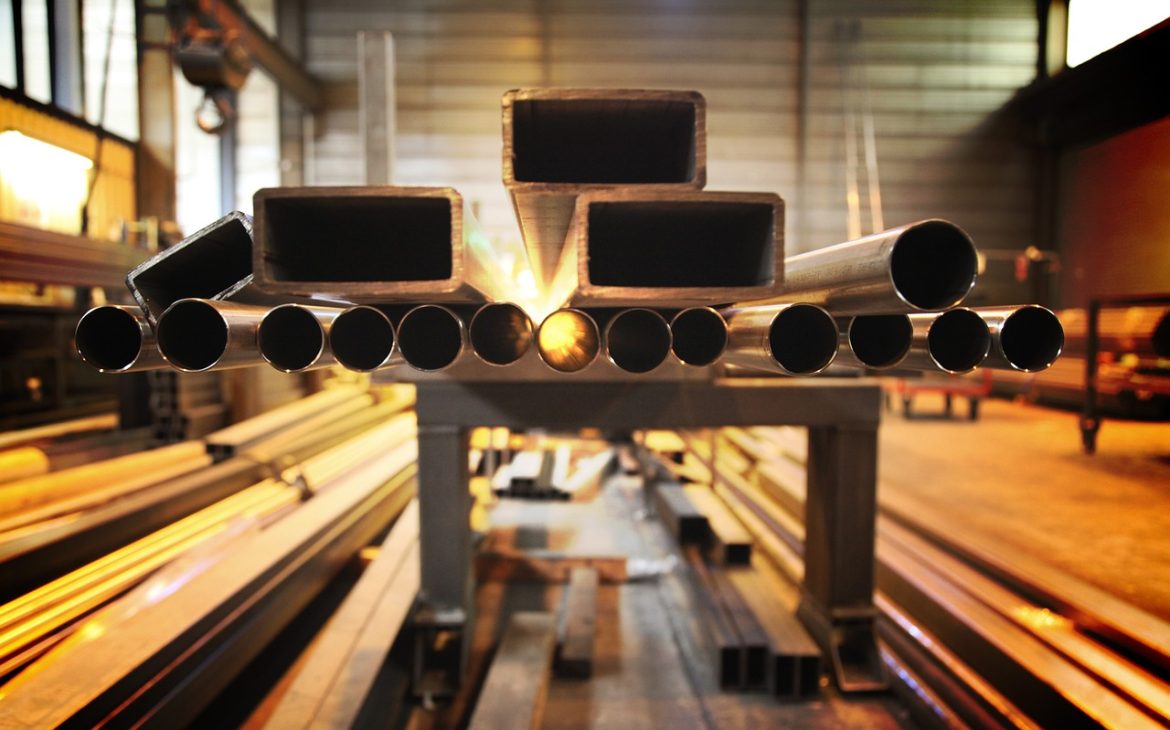Table of Contents
The steel industry is a fundamental pillar of modern industrial economies, weaving through countless sectors such as construction, automotive, and infrastructure. Unveiling its dynamics reveals a complex interplay of production, trade, and innovation.
The Backbone of Industrialization
Historically, steel has been crucial to industrialization. The material’s strength, flexibility, and durability made it the backbone of various industries and nations’ economic development. During the Industrial Revolution, steel production surged, fostering the growth of railways, skyscrapers, and bridges that characterized modern cities.
Nations such as the United States, Germany, and the United Kingdom became industrial powerhouses, largely due to their steel industries. Today, steel remains indispensable; our buildings, transportation systems, and machinery depend on it. Advances in production methods, from the Bessemer process to electric arc furnaces, reduced costs and improved quality, further embedding steel in our economic fabric. The ability to recycle steel also supports sustainability efforts, making it an increasingly integral part of the circular economy. However, understanding these benefits requires examining the global steel supply chain and its economic implications.
Evolution and Innovation
The evolution of the steel industry has been marked by considerable technological advancements. Innovations have streamlined production processes, improved sustainability, and enhanced material properties. Early forms of steel production were labor-intensive and slow. The Bessemer process, introduced in the 1850s, revolutionized the industry by significantly speeding up production and lowering costs. Later, the basic oxygen furnace and electric arc furnace further refined production, each with distinct efficiencies and environmental impacts. Modern advances include high-strength, low-alloy steels and the development of advanced high-strength steels (AHSS) for automotive applications, reducing vehicle weight while maintaining safety standards. The integration of digital technologies, including big data analytics and automation, heralds the smart factory era in steel production. These innovations not only boost productivity but also adapt to environmental regulations by minimizing emissions and energy consumption. Adapting to stricter emissions standards and global sustainability goals is essential, as the industry continues to innovate.
Global Supply and Demand Dynamics
Steel’s global supply and demand are influenced by economic growth, infrastructure investments, and geopolitical factors. China dominates global steel production, accounting for over half of the world’s output. Its rapid urbanization and massive infrastructure projects have driven unprecedented demand for steel. India, Japan, and the European Union are other key players, each with unique market dynamics. For example, Japan’s industry focuses on high-quality, specialized steel. Conversely, India’s growing economy and infrastructure needs fuel its expanding production capacities. The demand for steel correlates closely with economic health; during economic downturns, demand contracts, leading to price volatility and production adjustments. Conversely, recovery phases see a surge in demand. Geopolitical factors such as trade policies and tariffs also play critical roles. For instance, the US-China trade war significantly impacted global steel prices and trade flows. Understanding these dynamics is essential for stakeholders to navigate the complex global steel market effectively.
Environmental and Sustainability Concerns
As one of the most energy and resource-intensive industries, steel production bears significant environmental responsibility. The industry emits approximately 8% of global CO2 emissions. This has led to increasing pressure to adopt greener practices. Efforts to mitigate environmental impact include improving energy efficiency, adopting renewable energy sources, and developing new production methods such as hydrogen-based steelmaking. Companies invest in research and development to create more sustainable steel products and processes. The European Union’s Green Deal aims to achieve climate neutrality by 2050, compelling the steel industry to innovate. Recycling remains a central pillar of sustainability strategies; steel is 100% recyclable without loss of quality, and recycled steel reduces CO2 emissions significantly compared to primary production. Companies also adopt circular economy principles to minimize waste. Collaborations across the supply chain—from raw material suppliers to end-users—are essential to advancing these sustainability goals.
Future Prospects and Challenges
The steel industry’s future is marked by both promising opportunities and formidable challenges. Global urbanization and infrastructure renewal, especially in emerging economies, present significant growth opportunities. The shift towards renewable energy and electric vehicles offers new markets for specialized steel. However, the industry faces challenges, including fluctuating raw material prices, regulatory pressures, and competition from alternative materials like aluminum and carbon fiber. Digital transformation and Industry 4.0 technologies offer pathways to improved efficiency and innovation but require substantial investment. Talent acquisition and retention, particularly in technological fields, are critical to maintaining competitive advantages. The evolving regulatory landscape, particularly regarding environmental impacts, necessitates continual adaptation and innovation. Companies must balance immediate profitability with long-term sustainability to thrive. Strategic partnerships, investment in cutting-edge technology, and proactive environmental stewardship will be crucial to navigating the complexities of the future steel market.
Conclusion
The steel industry is an indispensable component of the global economy, underpinning sectors from construction to transportation. Its rich history of innovation exemplifies human ingenuity in leveraging material science to foster industrial development. The interplay of global supply, demand, and geopolitical factors creates a dynamic market landscape, challenging stakeholders to anticipate and adapt to shifts. Environmental concerns drive the industry towards more sustainable practices, emphasizing the importance of innovation in achieving climate goals. Future prospects hinge on the ability to balance growth opportunities with challenges such as fluctuating raw material costs and regulatory pressures. The strategic integration of advanced technologies, commitment to sustainability, and fostering of talent will be pivotal in ensuring the industry’s resilience. As the world progresses towards a more connected and environmentally conscious future, the steel industry stands at a crossroads, with the potential to shape the next era of industrial evolution.

